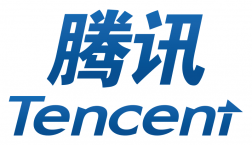Tencent’s Growth Through Accelerated Innovation Processes

Tencent successively used accelerated innovation processes to become one of the largest internet companies in the world.
Introduction:
Chinese companies are not typically known as “innovators.” There have been no major social or technological breakthroughs such as Facebooks or Tesla. But, Chinese companies have grown rapidly by reengineering the innovation processes to make new product development much faster and cheaper. This emphasis on speed, responsiveness, flexibility, and scale is increasingly relevant in the competitive and dynamic global market we operate in today. I will analyze how Tencent successively used accelerated innovation processes to become one of the largest internet companies in the world.
Tencent:
Founded in 1998 in Shenzhen, Tencent has grown to become China’s largest social-network and online-gaming company with a user base of 1 billion+. Tencent’s core products are QQ and WeChat – instant messaging and social networking platforms. Tencent’s current market capitalization is $183B and in the most recent quarter (Q3, 2015, on LTM basis), revenue increased by 24.7% and net income grew by 29.4%.


Business goals and operational model alignment:
1. Business Goal: Be first to market
- Rather than follow the traditional product development sequential process (certain steps need to be completed before other stages can begin), Tencent speeds things up by simultaneously working on many parts of the product at the same time in order to reduce the lead time of bringing products to market.
- For example, to develop a new integrated calendar on QQ instant messenger, the team included every function necessary for the entire product lifecycle (from host, launch, to service). Allowed Tencent to coordinate the critical product decisions (user interface, programming, building IT infrastructure) simultaneously and deliver the final product much faster. Product was completed in 2½ months, while the global standard is 6+ months.
2. Business Goal: Quickly introduce products that fit consumers’ needs to gain market share
- Rather than traditional time consuming “beta testing” processes, rapid “launch-test-improve” cycles are core to Tencent’s innovation process. Tencent’s development team regularly launches new platforms with limited functionality directly into the market, gathers user feedback, and development teams are able to rapidly incorporate new user-generated functionalities into the product.
- For example, when QQ Reminder first launched, it only included reminders for appointments, birthdays, and other anniversaries. Tencent received floods of input from users about wanting reminders for favorite sporting events, or gaming enthusiasts wanting reminders of gaming-tournament schedules. Tencent released a new version within weeks with both features added.
- By incorporating users into the product design process, Tencent is able to rapidly produce products that meet users’ needs, increasing product adoption and market share.
- In addition, by directly relying on customer feedback, this greatly reduces the costs of conducting market research and building prototypes.
3. Business Goal: Develop innovative revenue streams
- Online advertising is a much smaller market in China than in the United States. Therefore business models such as Facebook or Google that rely heavily on advertising would not be as profitable in China. In order to survive and be competitive in the local market, Tencent needed to develop other products and new revenue streams.
- Tencent developed a range of revenue streams to monetize traffic to its site. Tencent generates 90% of its revenue from non-advertising sources such as selling virtual products to its social platform users and gamers. In 2014, Facebook’s revenue per user is $9 compared with $16 per user for Tencent.
- By using simultaneous product development and rapid “launch-test-improve” cycles, Tencent is leading in business model innovation. WeChat added mobile payments in 2013, Facebook announced online payment system in 2015. WeChat allows users to set up online stores in 2014, Facebook added feature that allows retails to sell from Facebook pages in 2015.
- Through its accelerated innovation processes, Tencent is able to support its business model of being more nimble, agile, flexible, and responsive to create new products and services categories that will win over Chinese consumers.
Conclusion:
By using accelerated innovation processes, Tencent developed its competitive advantage by being a “fast follower” (not necessarily a technological pioneer) who can quickly deliver new products to the mass market at high volumes and affordable prices.
References:
http://sloanreview.mit.edu/article/accelerated-innovation-the-new-challenge-from-china/
https://hbr.org/2014/09/a-chinese-approach-to-management
http://www.mckinseychina.com/the-china-effect-on-global-innovation/



Thank you for shading light on this amazing but relatively less know company! It was very interesting to read about the innovation that they have done even before leading western companies.
My question is what else they (more generally the Chinese companies) need to do to be the global leaders in their field and not just in China?
Great article! Tencent’s “launch-test-improve” innovation process reminded me of Valve’s method of developing video games, when it used open source methods to get input from gamers on its Half Life game. It seemed to work great for Valve as well.
I think this method of innovation is critical for a product like WeChat which is ubiquitous across China, and is used in so many different use cases. It seems that WeChat combines a lot of the individual mobile apps we use in the US (like Facebook, GroupMe, ecommerce apps, SnapChat, news, etc….). Such a ubiquitous and comprehensive product is likely a result of Tencent listening to its customers very closely and iterating based on their recommendations and usage history (when perhaps some of the US apps did not pursue the same type of operating model).